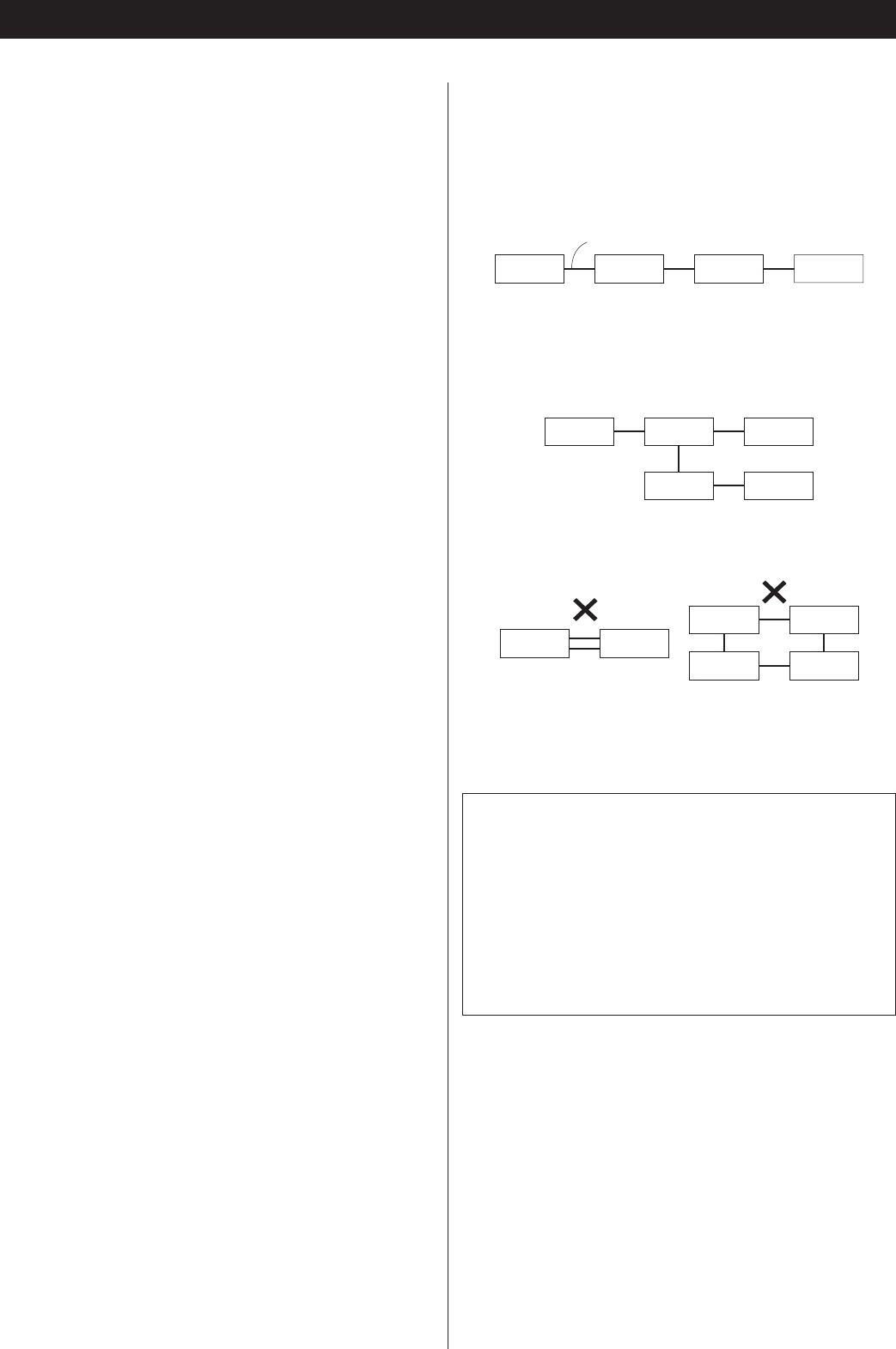
24
i.LINK (IEEE 1394)
The i.LINK is also known as IEEE 1394, an international
specification.
This unit is i.LINK (AUDIO) ready.
By connecting an i.LINK (AUDIO)-capable device to the i.LINK
(AUDIO) terminal on this unit using an i.LINK cable, you can
transmit Super Audio CD multi-channel signals that could not be
transmitted but in analog format in the past can be transmitted
in its original digital format, in addition to the capability of
transmitting 2-ch linear PCM data and multi-channel compressed
audio signals.
If you have multiple i.LINK-capable devices, you can connect
them through other devices to transmit data between them, so
you don’t need to be concerned with the order of connection.
Copyright protection system DTCP
To play back audio sounds recorded on Super Audio CD using
i.LINK, both the player and the D/A converter need to be
compliant to the copyright protection system DTCP (Digital
Transmission Content Protection).
This unit is DTCP compliant.
Data transfer rate
There are three transfer rates: 100 Mbps (S100), 200 Mbps
(S200), and 400 Mbps (S400). This unit is capable of transferring
data at a maximum 400Mbps.
For connection to an i.LINK-capable device, use a commercially
available S400-compliant 6-pin i.LINK cable.
When connecting multiple i.LINK-capable devices, avoid
connecting a device having a slow transfer rate between devices
having high transfer rates since this reduces the transfer rate of
the whole system. Connect devices having high transfer rates
towards the source as far “up-stream” as possible.
NOTES
<
Among the i.LINK formats there are “MPEG-2 TS” for BS
digital sources and “DV” for digital video for DVD recorders,
as well as the “i.LINK (AUDIO)” (A&M Protocol). Never
connect devices that are not compatible with i.LINK (AUDIO)
to this unit. If you do, this unit and other components may
not operate normally and may also become damaged.
<
In the process of data transfer, avoid plugging/unplugging the
i.LINK cables in use or switch on/off the power.
< Among i.LINK-capable devices, there are some that, if not
turned on, are not capable of relaying data.
< Some i.LINK-capable devices will not respond to this unit's
command. This is normal and is due to incompatibility among
i.LINK devices.
<
The receiving device may not support the output modes of
this unit. Read through the instruction manual of devices you
want to connect before making any connections.
How to connect multiple i.LINK-capable
devices
Daisy chain connection
You can daisy chain up to 17 devices including this unit.
Connection in tree structure
If you are using a device having three or more i.LINK connectors,
you may want to branch out the connections. This way of
connection allows you to connect up to 17 devices including this
unit.
Your system does not work if data is fed back to the output
device. Be careful not to create a loop.
i.LINK-capable
device
i.LINK-capable
device
i.LINK-capable
device
i.LINK-capable
device
i.LINK-capable
device
i.LINK-capable
device
i.LINK-capable
device
i.LINK-capable
device
i.LINK-capable
device
i.LINK-capable
device
i.LINK-capable
device
i.LINK-capable
device
i.LINK cable
i.LINK-capable
device
i.LINK-capable
device
i.LINK-capable
device
The i.LINK interface of this unit is designed in accordance with
the following specifications:
1)IEEE Std 1394a-2000, Standard for a High Performance
Serial Bus
2)Audio and Music Data Transmission Protocol 2.0
This unit is compliant with IEC 60958 bitstream, DVD-Audio,
Super Audio CD in the AM824 sequence adaptation layers of
this protocol.


















